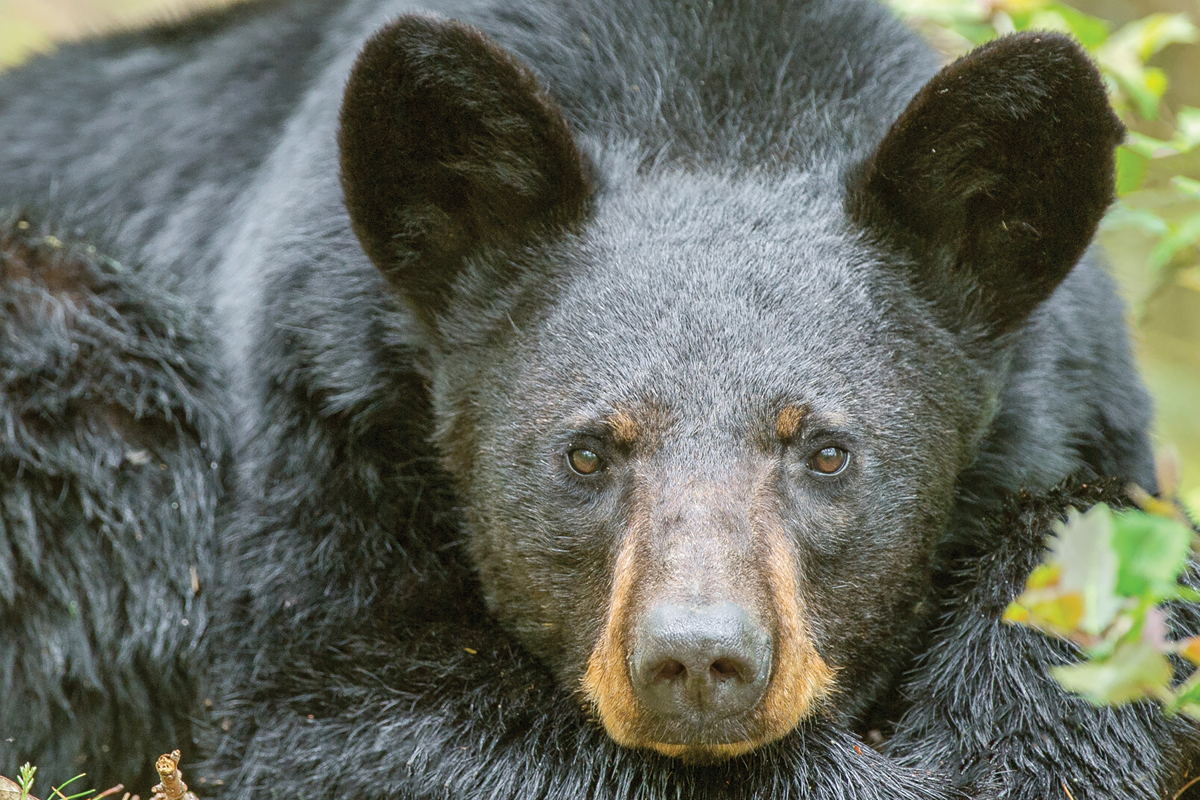Wildlife Commission approves bear season expansion, deer season shift
 An estimated 8,000 black bears live in the mountain region. Bill Lea photo
An estimated 8,000 black bears live in the mountain region. Bill Lea photo
During its Feb. 22 meeting, the N.C. Wildlife Resources Commission voted to adopt a slate of proposed rule changes for the coming year, including a pair of controversial measures that will shift the season dates for white-tailed deer and significantly expand the season length for black bear in the mountain region.
A public hearing held Jan. 11 in Clyde drew more than 100 people, of whom 21 spoke, offering mixed opinions on the measures. The most common refrain was that the changes would cause bear and deer seasons to overlap, creating opportunities for conflict between hunters and reducing opportunity for youth hunters to bag a deer.
The Wildlife Commission did adopt one amendment to the original proposal in recognition of that latter concern. While gun season will still change from its previous home, the Monday before Thanksgiving through the third Saturday after Thanksgiving week, to instead run from the first Saturday after Thanksgiving through Jan. 1, the adopted rule adds the Thursday and Friday of Thanksgiving week as youth deer hunting days in the western region.
“This change addresses the main concern we heard in our western public hearing by allowing youth under 18 using any lawful weapon on those two days,” Chairman Monty Crump said during the meeting.
However, the body did not make any changes to the bear season rule. Since the 1970s, bear season has taken place in two segments, the first running from the Monday on or nearest Oct. 15 through the Saturday before Thanksgiving, and the second from the third Monday after Thanksgiving through Jan. 1, with hunters able to use dogs throughout both segments but bait only during the first one. The new rule adds nine days to bear season with Saturday openers and allows bait use during both segments.
Of the 36 rule changes proposed in this year’s rulemaking process, only three generated more negative feedback than positive feedback — a proposal to reduce the daily creel limit for flounder, shifting deer season in the western region and the western black bear season expansion. Of those three, the black bear rule generated by far the most responses, and the most negative responses. In total, 646 people weighed in on the black bear rule, of whom 69% said they did not support the proposal.
Related Items
While only 29% of respondents said they lived in District 9, which covers the 11 western counties, even those responses were overwhelmingly negative, with 57% of District 9 residents saying they opposed the rule change.
“I’m not surprised at all,” said Bill Lea, a retired U.S. Forest Service assistant ranger and prolific black bear photographer. “They are required to get input, so they solicit input because they’re required to, but they sure don’t listen to input. They don’t make a proposal like this unless they’ve already decided they’re going to do it.”
That’s not so, said District 9 Commissioner Brad Stanback, who lives in Canton, pointing out that the Commission amended the deer hunting rule based on what members heard from the public.
“While there were a few concerns about potential conflicts from having bear and deer seasons overlap, most of the comments against our proposals came from anti-hunters who just didn’t want bears to be hunted at all, especially with dogs,” he said.
Warnings about conflicts between deer and bear hunters were a key feature of the Jan. 11 meeting, with multiple commenters warning Wildlife Commission representatives that the overlap could lead to violent disputes or illegal taking of deer while using bear dogs. The Wildlife Commission maintains that similar overlaps have worked out fine in other regions of the state.

White-tailed deer. File photo
“I would never shoot a man over a dog, but I know people that will,” Caldwell County resident David Woods said at the hearing. “I’m telling you, you can mark it down tonight. I’m just telling you there will be trouble. If we have meetings next year, we’ll be talking about it, because somebody is stupid enough to do it.”
Lea said he’s not against hunting but is opposed to hunting bear with dogs, believing it’s cruel to the bears. He also contends that the expanded season dates are designed to allow hunters to kill more pregnant female bears, which den earlier than other bears, and will pose a safety hazard to hikers using the backcountry — of which there are many during the peak leaf season that overlaps with bear season.
“There is always the potential for conflicts between hunters and campers/hikers,” Stanback said. “But bear hunters and their dogs tend to be in more remote areas. In fact, a few of the comments we received from bear hunters stated that they did not see much potential conflict with deer hunters because the bear hunters were mostly in remote areas that deer hunters don’t make the effort to get to.”
However, he noted that campers and hikers should be aware of season dates and take appropriate precautions.
Of the point Lea raised about pregnant females, Stanback said the earlier bear season would not likely result in more pregnant females being harvested, asserting that while pregnant females may den a bit earlier than males, it’s not enough to “impact their presence in the woods during the first segment of bear season.”
Regardless of whether the rule is aimed at increasing the harvest of pregnant female bears specifically, it is aimed at ensuring hunters kill more bears in the years ahead. Since 2012, when the Wildlife Commission first approved a plan to keep black bear population growth at 0% in the mountains, the region’s bear population has grown from 4,400 to an estimated 8,000 bears — despite ongoing interest in hunting as evidenced by a record-breaking bear harvest in 2022. The population continues to grow at 3-4% annually.
Season dates for the mountain bear hunting season have not changed since 1977, when the regional population was estimated at fewer than 900 bears.
With the Wildlife Commission’s approval, the new rules are slated to go into effect this fall — pending review from the N.C. Rules Review Commission. If that body receives 10 or more letters requesting legislative review for any of the newly approved Wildlife Commission rules, implementation will be delayed until the General Assembly has had a chance to act.
Such a review took place in 2022, when the Wildlife Commission approved a controversial rule changing bear sanctuary areas to designated bear management units and allowing permit hunts to occur there. However, the legislature declined to overturn the Wildlife Commission’s decision.













